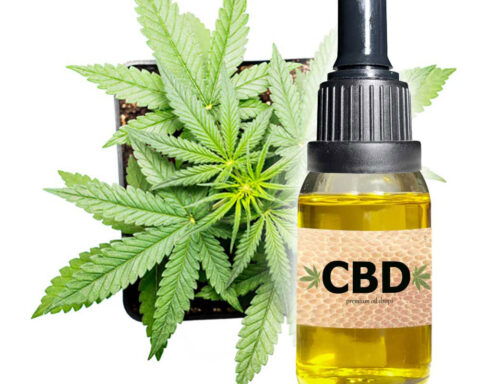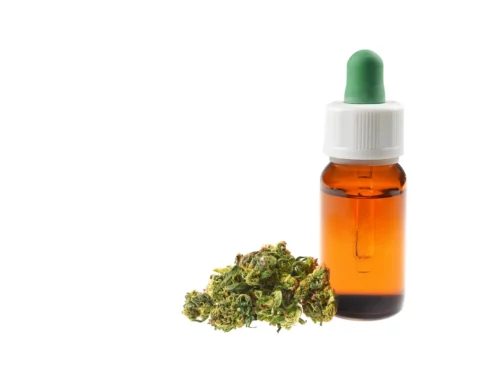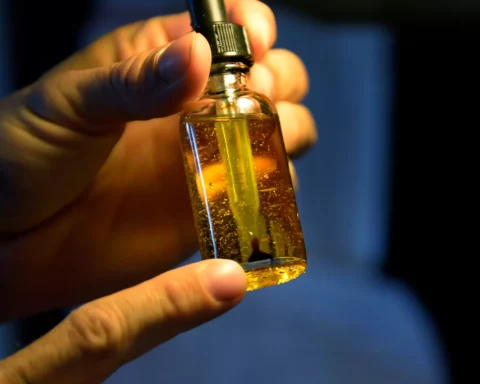If you are a CBD enthusiast, you likely know about full-spectrum CBD oil. There are other types of CBD oil, including isolate-based and broad-spectrum CBD oil, but the full-range CBD oil stands out the most. Consumers claim that this oil has benefits, such as fighting pain and inflammation, reducing stress, depression, anxiety, and managing illnesses. However, there is insufficient scientific evidence to show how effective CBD oil can be for these benefits. What makes up full-spectrum CBD oil, and what are its properties? Learn more about full-spectrum CBD oil and its components below.
What Is Full-Spectrum CBD Oil?
CBD is a chemical compound derived from cannabis plants (marijuana and hemp). However, most CBD oils are extracted from hemp to meet the less than 0.3% THC threshold that’s federally allowed for legal CBD oil. When marijuana is used to make CBD oil, the excess THC has to be removed lest the CBD oil is considered illegal. CBD is one of the 113+ active compounds found in cannabis plants. Full-spectrum CBD oil has all the active cannabinoids such as THC, CBD, CBN, and CBC. It also contains terpenes and flavonoids and is said to have a full entourage effect because of the multiple cannabinoids.
Difference between Full-Spectrum CBD Oil and Other Types of CBD Oils?
Full-spectrum is one of the three formulations of CBD oil. The other two types are broad-spectrum and isolate-based CBD oil. Broad-spectrum CBD oil has as many compounds as full-spectrum, only that it does not have the psychoactive THC. Full-spectrum CBD oil has at most 0.3% THC, which should not make you high but might show up in a drug test. In contrast, broad-range CBD oil lacks THC but still has the full entourage effect because of the other cannabinoids than THC. Isolate-based CBD oil is pure CBD oil, with no other cannabinoids, terpenes, or flavonoids. Unlike broad and full-spectrum CBD oils from whole-plant hemp, isolates are made from pure CBD.
The 11+ Compounds in Full-Spectrum CBD Oil
Full-spectrum CBD oil has more than 113 active compounds, with the following being the main ones;
Main cannabinoids (THC & CBD)
Minor cannabinoids (CBN, CBC, CBG)
Other/miscellaneous cannabinoids (CBDV, CBDA, CBGA)
Other compounds (minerals, vitamins, and oils)
Main Cannabinoids
The main cannabinoids forming full-spectrum CBD oil are THC and CBD oil. As described, CBD is one of the 113+ active compounds in the hemp plant, and it makes up about two-fifths of full-spectrum CBD oil. Although there is not enough scientific research, people claim it has pain-relieving, anxiolytic, and analgesic properties. The other major cannabinoid is THC (tetrahydrocannabinol), similar to CBD but binds differently with endocannabinoid receptors, hence the ‘high’ effect linked to it. The main difference between CBD and THC is that the former does not have psychoactive properties and will not make you high.
Minor Cannabinoids
Minor cannabinoids in the full-spectrum CBD oil include CBC, CBG, and CBN. CBN has a similar structure as CBD and THC and is often found in high concentrations in aging hemp plants. Since CBN binds to receptors, it is associated with several health benefits, including pain relief and anxiolytic effects. However, there is not enough evidence to show that it has these properties. CBC, another minor cannabinoid, will not make you high like THC. However, not much is known about it at the moment. It does not bind to receptors like CBD and may not have the health benefits linked to CBD. However, studies are ongoing to determine the pharmacological properties of CBC. CBG is also another minor compound in hemp-derived CBD oil. Early studies by Valdeolivas et al. (2015) involving animals concluded that CBD might have great pharmacological properties, such as fighting inflammation.
Other Cannabinoids
Besides the main and minor cannabinoids, CBD oil has other cannabinoids, including CBDA, CBGA, and CBDV. CBDV is a cannabinoid in the hemp plant that will not make you since it lacks the psychoactive properties linked to THC. Its highest concentrations occur on cannabis sativa strains. Since it has a similar structure to CBD, it has the same properties as this cannabinoid. CBDA or cannabidiolic acid occurs in high concentrations in living cannabis plants, making it less likely to occur in high amounts in purified CBD oil. However, since it has similar structures as CBD, it likely has similar properties. The best way you enjoy CBDA is by juicing live hemp plants or squeezing them to release the oil. CBGA is the precursor of most cannabinoids, and slight additions or modifications result in the formation of other cannabinoids. A study by Morales, et al. (2017) shows that CBGA may help fight gastrointestinal disorders. This cannabinoid also has anti-inflammatory and anti-bacterial properties not linked to most cannabinoids, but more studies are needed to prove these claims.
Minerals, Vitamins, and Oils
CBD oil contains vitamins, oils, and minerals besides the main, minor, and other cannabinoids discussed above. Speaking of minerals. CBD oil has modest amounts of potassium, calcium, zinc, and iron, which the body needs for many functions. For instance, iron helps in blood formation, potassium plays a role in osmoregulation and maintains food pressure, and calcium is needed for strong bone and teeth formation. You can also reap trace amounts of vitamins A, B, C, and E in hemp-derived CBD oil that may help build up immunity, fight inflammation, and express antioxidant properties, among other properties. However, there is not enough evidence to show that the vitamins in CBD oil exist in significant amounts to support the roles linked to them.
You can also find omega- 3 and 6 fatty acids (oils) in hemp-derived CBD oil, which may help with brain functions and regulation of body processes.
Conclusion
Full-spectrum CBD oil is the ultimate choice for many CBD enthusiasts. It has many cannabinoids, minor, major, and miscellaneous, contributing to its roles. Besides, the oil has vitamins, minerals, and oils, although they only occur in trace amounts.
References
Valdeolivas, S., Navarrete, C., Cantarero, I., Bellido, M. L., Muñoz, E., & Sagredo, O. (2015). Neuroprotective Properties Of Cannabigerol In Huntington’s Disease: Studies In R6/2 Mice And 3-Nitropropionate-Lesioned Mice. Neurotherapeutics, 12(1), 185-199. Morales, P., Reggio, P. H., & Jagerovic, N. (2017). An Overview On Medicinal Chemistry Of Synthetic And Natural Derivatives Of Cannabidiol. Frontiers In Pharmacology, 8, 422.
- Is Mushroom Coffee Worth the Hype? An Expert’s Take - April 19, 2024
- Missionary Position – Least Likely To Bring You To Climax - April 7, 2023
- Vibrators could put you in Jail - March 31, 2023









